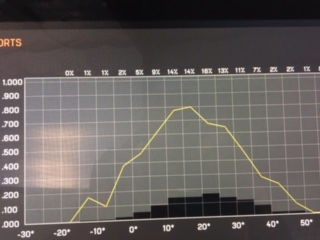EXIT VELOCITY AND LAUNCH ANGLE: WHY SO MUCH DEBATE?
- elitediamondperfor
- May 9, 2022
- 3 min read
I had three of my high school players come in right after tryouts and tell me they had a funny story for me. They said that their coach told them that “Exit Velocity and Launch Angle were (expletive).” For some reason, this feeling is not uncommon among baseball coaches, parents, spectators, etc. Today I want to discuss what these terms mean and why they are not (expletive). Rather they are paramount to understanding hitting and how to get hitters to improve.
EXIT VELOCITY - THE SPEED OF THE BALL OFF OF THE BAT (HOW HARD WE HIT THE BALL) The biggest correlating factor to success as a hitter is how hard we hit the ball. The best hitters in the world hit the ball hard and do it consistently. The harder a hitter can hit the ball, the greater the potential for success at the plate, period. Take a look at the chart below.

What do we notice? The harder the ball gets hit, the better the chance of success. Chances of getting a hit, getting on base, getting extra base hits, and so on go up with higher exit velocity.
LAUNCH ANGLE - THE ANGLE OF THE BALL OFF OF THE BAT
My biggest aim at Elite Diamond Performance is to educate hitters. This is why I get frustrated when I hear people bashing data points when they don’t have an understanding of what they are. So I apologize in advance if this next paragraph comes across more heated than my usual writing but I believe that much of the debate around the data revolution in baseball comes from a lack of education.
I always get a kick out of people talking about launch angle like it is the downfall of hitting. I hear people talking about a “launch angle swing” or say that “launch angle is no good” or a hundred other statements that tell me there is a lack of understanding when it comes to this term. Let me say this very clearly, LAUNCH ANGLE IS NOT SYNONYMOUS WITH FLY BALLS. When people hear launch angle, they immediately think balls in the air and trying to hit the ball as high in the air as possible. This could not be further from the truth. EVERY BALL THAT HAS BEEN PUT IN PLAY OVER THE PAST 150 YEARS, EVERY SINGLE ONE, 100% HAS HAD A LAUNCH ANGLE. Ground balls, line drives and fly balls all have launch angles. Finally, THE ONLY BALL THAT DOESN’T HAVE A LAUNCH ANGLE IS ONE THAT GETS MISSED.
Take a look at the chart below with outcomes in MLB at different launch angles.
Batted Ball Type (Launch Angle) OBP SLG OPS
Grounders (10 Degrees and Under) .232 .250 .483
Liners (10-25 Degrees) .685 .883 1.568
Flies (25 Degrees and Over) .213 .621 .834
If you believe that hitting line drives is important (as you should), you emphasize launch angle. The first statement that I tell every hitter that I work with, whether you are a 100 pound little leaguer or a 250 pound professional, everything that we do is designed to hit more line drives. Balls in the 10-25 degree range are what make hitters at every level successful.
CONCLUSION Like I stated in the beginning, I continue to be confused by the heated debates between coaches, parents and players over the terms exit velocity and launch angle. If I had to pick two metrics that measured not only the potential of a hitter but the productivity of a hitter they would be exit velocity and launch angle. Essentially, if you are a successful hitter, you have the ability to hit the ball hard and constantly hit the ball at line drive launch angles.




Comments